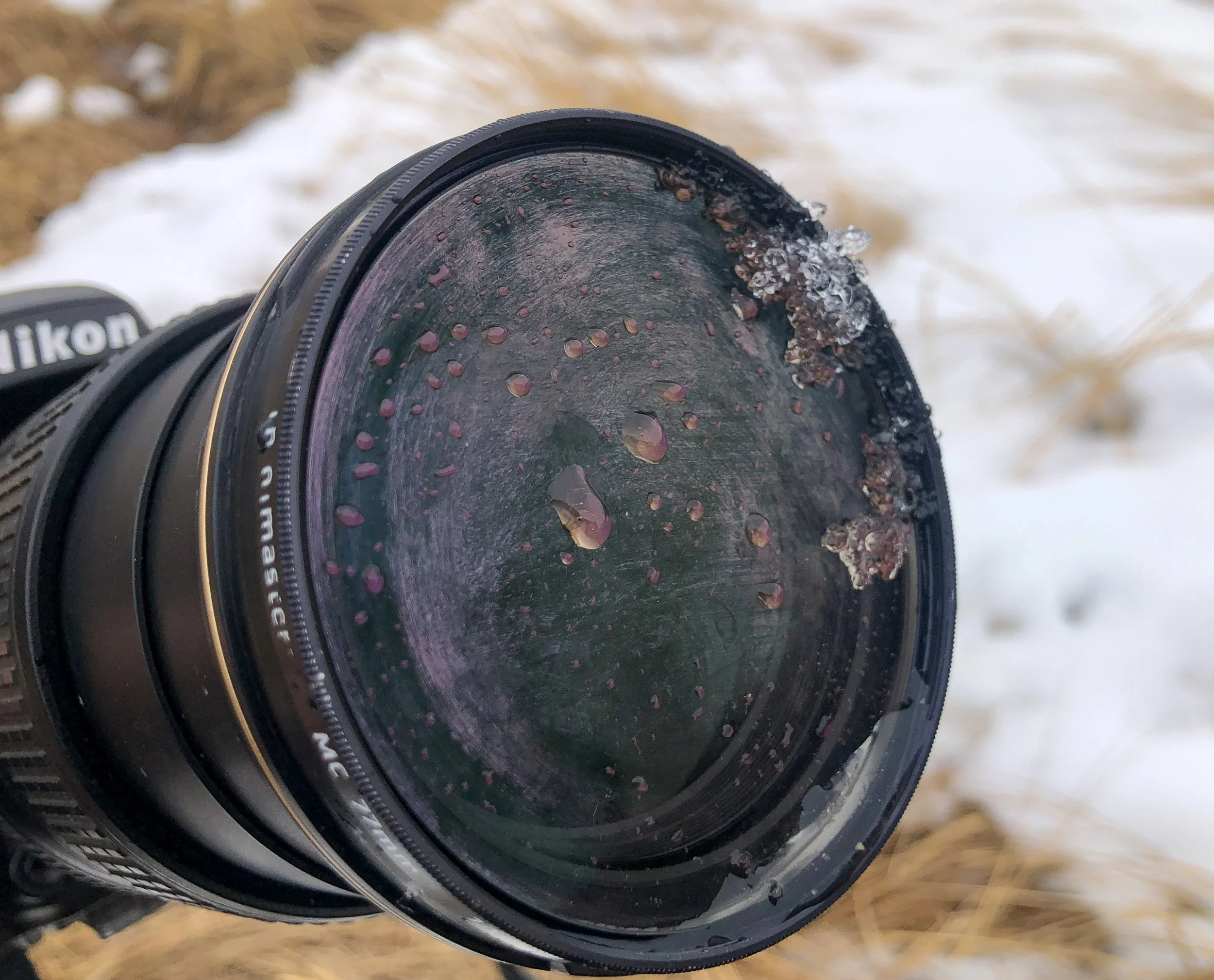How to Protect Your Camera in Cold Weather
Due to the rapid temperature change, condensation can form and wreak havoc with your camera equipment when you go inside to the warmth after being out in cold weather.
Of the essence is how to prevent condensation from occurring in the first place.
How to prevent condensation from forming on your camera and lens.
My favorite go-to solution is to seal the camera in a plastic bag while I’m still outside.
The cold camera is sealed in a plastic bag prior to being warmed up slowly after the photo shoot.
After removing as much air as possible from the inside of the plastic bag, I place it in my camera bag and do up the zipper.
Additionally, you could keep your camera bag outside for an even slower warm-up.
What I do next depends on how cold it is, although the ultimate plan is to keep the camera equipment away from a direct heat source.
If it’s not extremely cold but still below freezing, I place it away from any heat source in my vehicle or inside the house.
If the camera is really cold, I follow the same “in the bag” procedure, but I’ll store it in the coolest area of the house, which is in the basement.
This allows the camera bag and the equipment to climatize slowly, thus preventing condensation from developing.
If you find yourself without a bag of any kind, you could wrap your equipment in your cold jacket and place it in the coolest area of your vehicle if traveling. I often have a towel or blanket in my vehicle, and I’ll use either one if I want to keep my coat on.
Silica gel packs in your camera bag can help reduce condensation, although the goal is to prevent condensation if possible, and a gel pack may not be enough.
If it’s really cold, you may want to store your equipment safely in an unheated garage or at least the coolest indoor location. I know it’s tempting to want to view your photos, but you don’t want to rush the process and defeat the purpose of utilizing the bag technique.
Leave your gear alone as it warms up slowly. Depending on the temperature and how cold or frozen your equipment is, this may take several hours or much longer.
Protect your memory card!
Please remember to give your media card time to warm up before you remove it from the camera and copy photos to your computer or other device.
Removing the memory card from the camera after it’s sufficiently warmed up.
More cold weather tips for your camera equipment.
Keep Batteries & Memory Cards Warm
Camera batteries deplete faster in cold weather. If possible, carry a spare battery or batteries close to your body for warmth to exchange when needed.
Be aware that lithium-ion batteries will outperform alkaline ones in cold weather.
Keep spare memory cards in your pocket or close to you to help protect them from the cold.
Reduce Fogging
Breathing away from the camera and lens helps avoid fogging up issues.
If fogging becomes an issue, anti-fog solutions or wipes are available. I cannot speak from personal experience as I have not needed to use them.
Keep Your Camera Warm
Securing hand warmers to your camera will help, or you can wrap it in an insulated cover or neoprene case to help maintain its internal temperature.
I have not used hand warmers, but I have photography friends who do and find them to be effective.
Protect the Lens
Using a lens hood can help reduce snow, frost, or condensation directly hitting the lens.
Using a lens filter can help protect the lens from unexpected encounters with snow and moisture, as seen in my example photo below.
For non-weather-sealed cameras, use a rain cover or a plastic bag to shield against snow and moisture.
Tripod Care
Tripods can become extremely cold when touched with metal parts. Use one with foam grips on its legs, if possible, for more comfortable maneuvering.
A lens filter screws onto the lens and helps protects the lens from snow and moisture, like this after I ended up in a snow bank quite unexpectedly.
Once I returned to my vehicle, I removed the filter and checked the lens glass. Much to my relief, it was dry, unscathed, and saved by the filter. I gently flicked off the moisture with a soft lens cleaning cloth and placed it in my camera bag for safekeeping, followed by a cleaning after it had time to warm up and dry off.
A lens hood attaches to the outer front of the lens, helping protect the glass from moisture. Its primary use is shielding the lens and preventing unwanted light, such as bright sun, from hitting it.
Next time you head out into the cold, remember to have a plastic bag handy to protect your equipment. This will greatly reduce and eliminate the risk of condensation on your precious gear following your fun photo shoot in the cold!






